https://www.youtube.com/watch?v=ZDxLa6P6exc
SGI Indigo2 - An $86,000 Workstation from 1995

Silicon Graphics Incorporated or S G I is one of those computer companies that I always heard about growing up but never really knew much about .
I mostly remember them being involved with Nintendo in the early to mid nineties with SGI machines aiding in the development of Donkey Kong country's pre 3d graphics and the company helping develop the chip set for the ultra 64 which became the Nintendo 64 .
There's a whole lot more to the story of SGI than that , of course , more than enough for its own dedicated video .
But for this one , let's start in the year 1991 .
This was at the middle of SDS golden age of being a market leader in graphics workstation innovation .
They served a niche professional market .
Sure , but it was a lucrative one making them over $900 million annually .
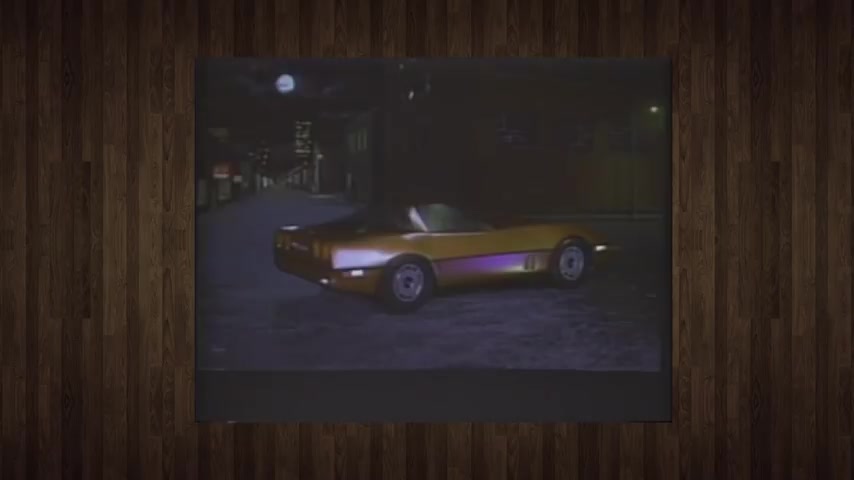
And their machines ruled supreme in everything from computer aided design to Blockbuster movie production films like Terminator Two Jurassic Park and the Abyss would not have turned out the way they did without S G being available .
And in 1991 their Indigo computer was one of the single most capable desktop workstations around with a 33 megahertz Risk CP and a 236 megabyte hard disk drive all for just shy of $10,000 .
Well , the Indigo saw plenty of future innovations and upgrades that more than tripled its cap .
Eventually January of 1993 saw the introduction of the Indigo Two providing users a new workstation solution altogether .
These not only came with a more compact , brightly colored teal case design but featured upgrades to the CP the graphics subsystem and generally awesome stuff all over the place .
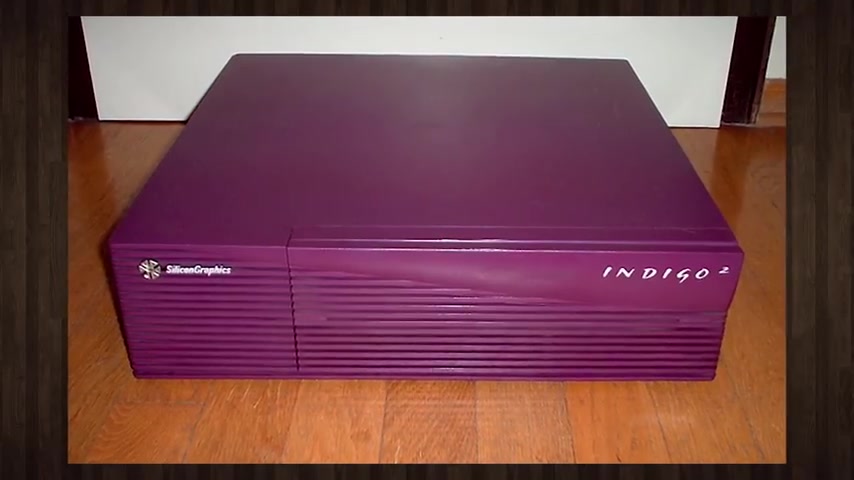
This came at a cost of course , it was roughly $30,000 for a model with a 100 megahertz R 4000 SC processor and 96 megabytes of ram .
Also don't confuse it with the Sgi Indie , which was released a few months later as a cost produced version of the original Indigo .
And lastly , there was an upgraded Indigo two in 1995 that came with a purple case known as the impact , which saw its own slew of alternate releases , upgrades and variations .
This was the king of desktop workstations until the introduction of the S G octane at the end of 1996 .
But that's getting beyond the scope of this particular video .
The rest of this will be focused on the Indigo to impact from 1995 which I got for the delightful cost of free .
And that's because this isn't my machine at all .
And is instead on loan to me from an awesome viewer of mine named Terrence .
Thanks , Terrence .
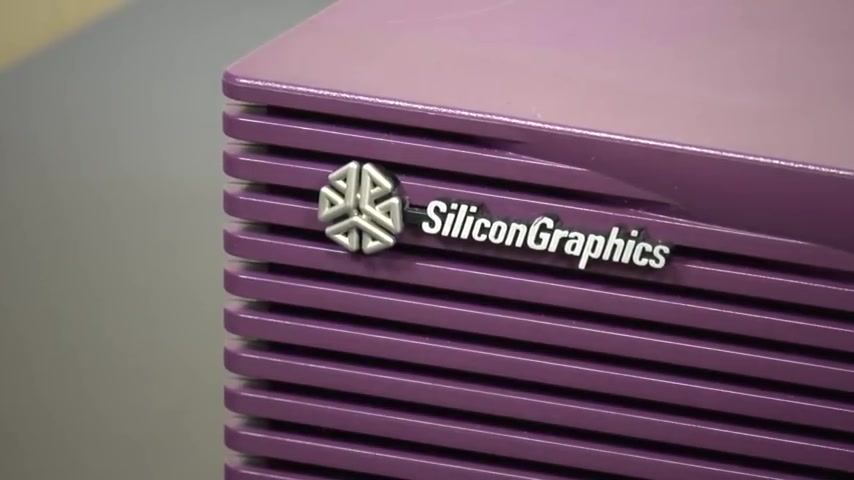
You're far too trusting as for what you can expect to pay for one of these though .
The answer varies as wildly as the number of indigo two permutations that exist on the current collector's market expect to pay anywhere from $90 for a low end indigo two on up to $2300 or more for a tricked out purple Indigo two impact .
And this particular model I have right here is one of the latter , what makes it so special ?
Well , as you might have noticed , this isn't just an indigo to impact , but one that is known as the impact 10,000 or max impact .
That basically means it costs a ton of money , not just today , but especially back when it was new , this particular configuration theoretically could have cost $86,000 or so in 1995 .
And that's with an academic discount , I say theoretically because this thing is boasting certain hardware that didn't readily exist in 95 which will get to shortly .
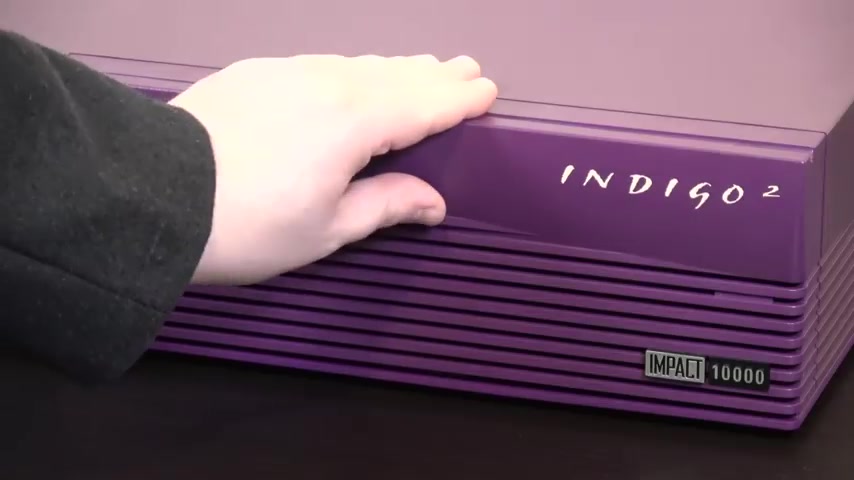
So yeah , this is not the kind of computer you would have seen at a circuit city up against Packard Bells and compacts SGI workstations like the Indigo two are truly something special as evidenced by the case design alone .
Not only is it a gorgeous shade of purple , one might even say indigo , but it has a case that just screams creative to me , it's got this door on the front that opens up effortlessly to reveal its optical disk drive and a recessed power button inducing a state of equal parts pleasure and powerful capability when pushed and far be it from SGI to go with a standard lock and key to keep it from being tampered with .
This has a solid metal security bar locking into place with all the finesse of taking a sledgehammer to a bonsai tree .
And if you prefer your locked up workstations in a more vertical fashion , it comes with matching mounting stands to help it stand up tall and proud .
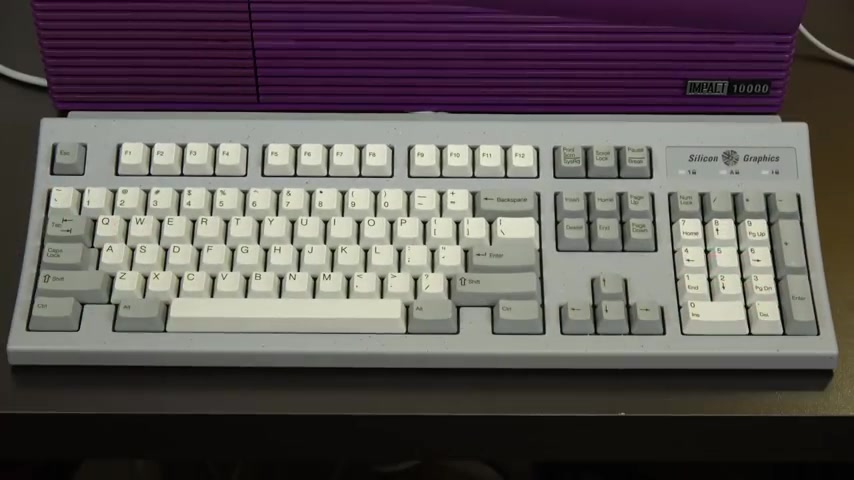
That's if you want to risk lifting it since it weighs in at a whopping £45 being constructed of what feels like solid granite .
Speaking of granite , that's the official color scheme of the PS two compatible keyboard and mouse .
The keyboard feels all right , but it's nothing special , just rubber domes underneath and a typical keyboard layout .
Same with the mouse .
It's simply average .
Not exactly what I would expect for a computer that costs nearly as much as a Porsche 911 20 something years ago .
Around back , you have a rather typical looking IO plate with integrated ports alongside a few option boards , power supply , keyboard and mouse .
Rs 422 serial AI and 10 base T events , parallel Scuzzy two audio input and output ports and a 13 W three connector for analog RGB monitors and a de nine port for 3D stereo glasses .
While I don't have the glasses , I do have a monitor that works with it .
Even if it's not what it would have had back in the nineties .
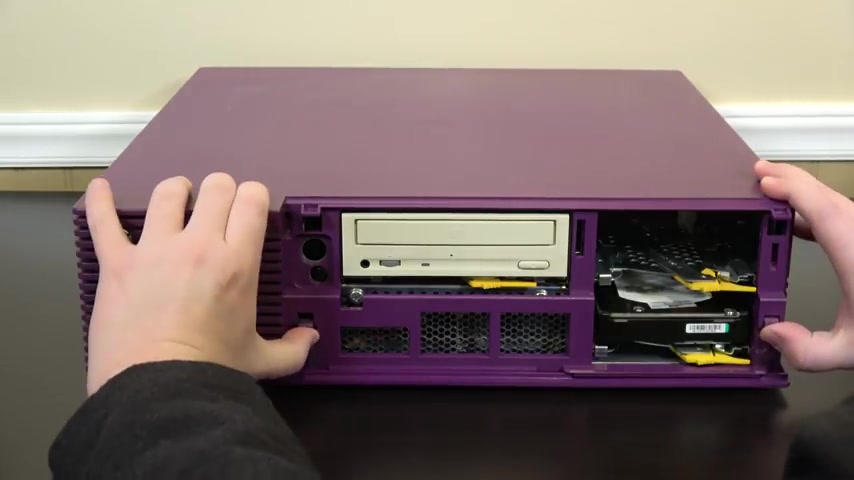
This is an NC multi sync LCD 18 and 60 NX , which is the only monitor I have that works with the Indigo two due to its sync on green display requirement .
And even then I still have to use 1000 13 W three to VGA converter .
And even that's been modified to work with this particular monitor and computer combination .
Otherwise , I don't get a signal .
The complexities continue within the case itself which opens up with no tools required and houses tons of technical titillation that's totally outside of my realm of expertise .
Still , I couldn't resist showing off what a sweet looking computer this is inside and out and at least go over some of the specs of this beast at the core of the whole thing is the CP A mips R 10,000 running at 195 megahertz .
In this case , with an R 2010 floating point chip alongside there's also a ridiculous one gigabyte of ram installed on this machine , which would have been astronomical in 1995 .
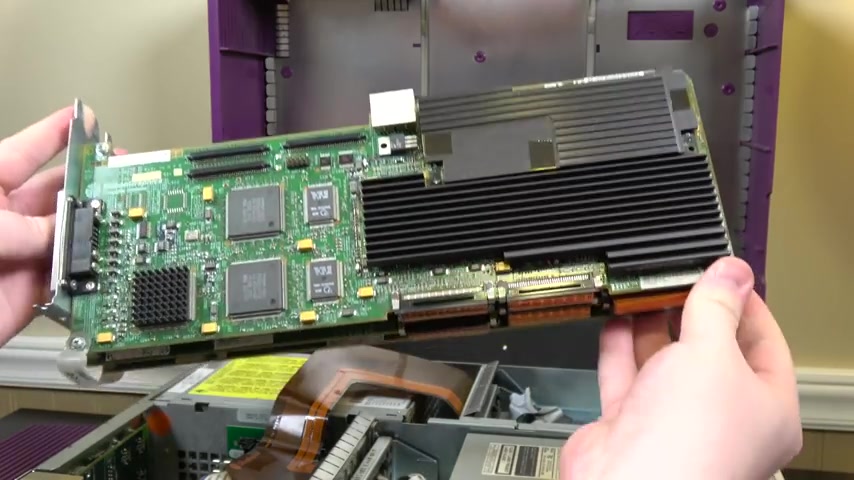
Seeing as the largest ram kit available from SGI was 128 megabytes and that alone cost nearly 10 grand .
The other huge chunk of costly tech inside .
Here is the graphics card set up which consists of the three board max impact chip set with a text ram option installed .
This brings the texture memory to eight megabytes with an additional 24 megs available for things like stencil and Z buffers and video output DRM .
This provided exceptional graphics output for the time utilizing 12 bits per channel and 48 bit RGB color at resolutions up to 1280 by 124 with a 600 by 200 maximum .
The sound capabilities aren't bad either with a combined 16 bit deck and ac capable of reproducing 48 kilohertz sound with recording and playback and all the stuff you'd expect really .
And as for storage , this machine has a 150 gigabyte 15,000 rpm .
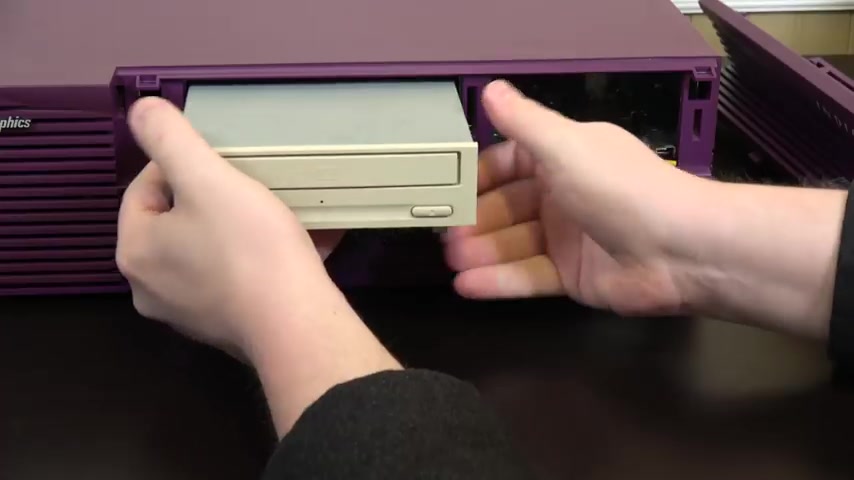
Scuzzy two hard drive with room for a second one if need be .
And as for external media , the only drive on offer here is a TX 32 X Scuzzy CD rom , which is fine since these were made to be hooked up to a network at all times .
And most files were shared that way now onto the software , which is well , it's workstation stuff .
What do you expect ?
It runs sgi's own version of UNIX known as Iris .
And it is quite the experience if you're mostly familiar with PC operating environments like I am .
This is Iris 64 version 6.5 .
And for the nineties , this is some delightfully powerful stuff being purpose built from the ground up to work with SGI architecture .
In particular , the result is a very stable and usable graphical interface that feels slick to use and a command line interface that lets you dive into the nitty gritty nuts and bolts stuff when you need to , which is going to be rather often combined with the technical abilities of the hardware .

It's a bit like using a Linux machine from 10 years into the future .
From when it launched it .
I know this .
Well , this is it , this might be the right one and that's right .
It wasn't just some made up software for the movie .
The 3D file manager from Jurassic Park is a real piece of uni software known as F S N or Fusion .
Ah , talk about living out a childhood fantasy .
I don't even know what I'm doing , but I'm having fun .
But as useful and productive as some of the applications are when it comes to games , the Indigo Two is lacking in a big way and really , you can't fault it for that .
This was a high end workstation that was never meant for public use .
And as far as I can tell , there were never any games actually sold for it again .
It makes sense .
But beyond a few demos and source ports , there's not much here in terms of gaming , even if the hardware is more than capable in theory .
Finally , you might be wondering about emulation options .
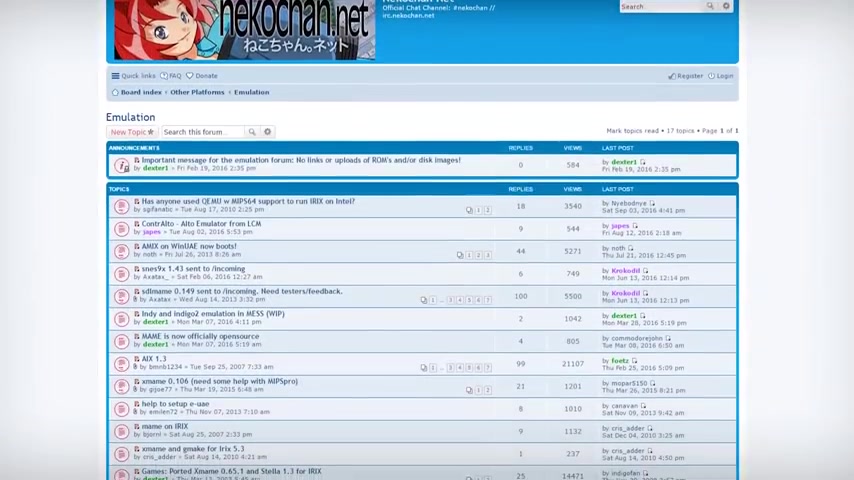
And well , so am I while there are quite a few emulators for Linux that aim to emulate certain MS chip sets and Iris installations .
I'm not aware of any that fully mimic the capabilities of an Indigo Two and can't find much in terms of active development happening with that goal in mind .
And of course , the question becomes , is it worth buying an S G I Indigo two or something similar in that range of workstations ?
And , well , I'd say you have to be a very special , unique blend of crazy geek in order to want to spend the time and money on one of these .
But that's not necessarily a bad thing if you're that type of person , I'm just not .

And that's not to say that I don't think it's really cool and that I wouldn't want to have one because I would want to have one of these things if anything , just because that cool case design and the sort of pedigree that it comes with as far as being related to different things going on in the gaming industry and a little bit of movies and all sorts of creative and professional type work .
And it was just something that was out of reach of consumers back in the day and in a way , it still kind of is .
So it puts you in this elite I club of owners of S G I machines if you were to grab one back then .
And now , of course , but for me that stuff only goes so far , at least for the type of collecting that I do and the type of computers that I look out for and a lot of that does have to do with gaming .
What else would I ever do with it if this were mine ?
And not much , it would probably pretty much just sit there looking pretty and um , for some machines , I can justify that like the Commodore pet .
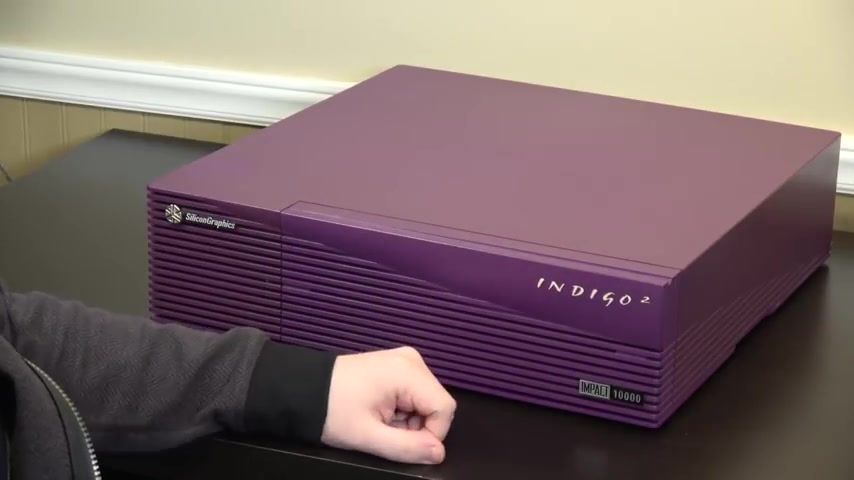
But for something like this , not so much , especially because to get it to really do all the stuff that I showed you here , you're gonna be shelling out an awful lot of money for a fully specked out machine .
So , uh , you're probably not historical .
Yes , but maybe not the best thing to uh , just go out and purchase on a whim .
On the other hand , if you still want one , I do not blame you at all .
And might I recommend S G I Depot ran by Ian Mapleton who helped me a ton with this video .
In fact , he's got a bunch of great stuff for sale and a ton of information on S G I machines .
Thank you very much to Ian for helping making this video possible .
And thanks again to Terrence for loaning me his machine .
And if you enjoyed this video , then perhaps you'd like to stick around and see some of my others on other computers and other things , new videos every Monday and Friday .
So stay tuned for those if you'd like .
And as always , thank you very much for watching .
Are you looking for a way to reach a wider audience and get more views on your videos?
Our innovative video to text transcribing service can help you do just that.
We provide accurate transcriptions of your videos along with visual content that will help you attract new viewers and keep them engaged. Plus, our data analytics and ad campaign tools can help you monetize your content and maximize your revenue.
Let's partner up and take your video content to the next level!
Contact us today to learn more.